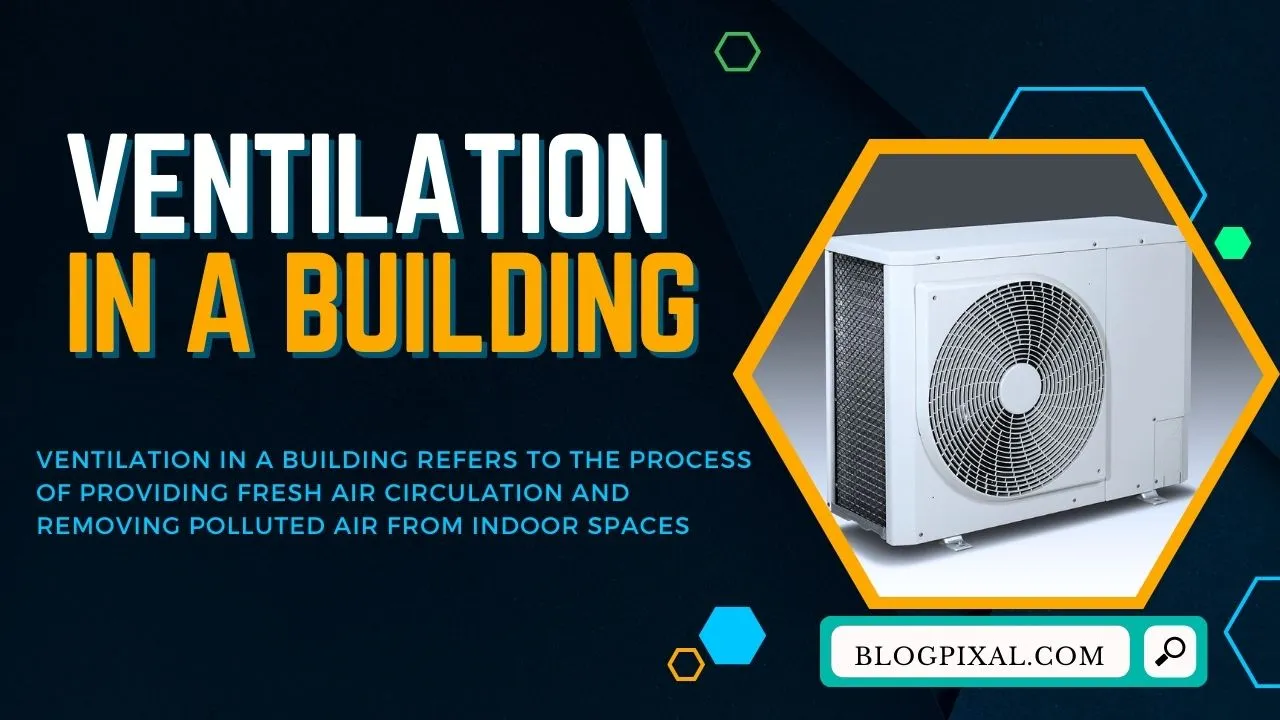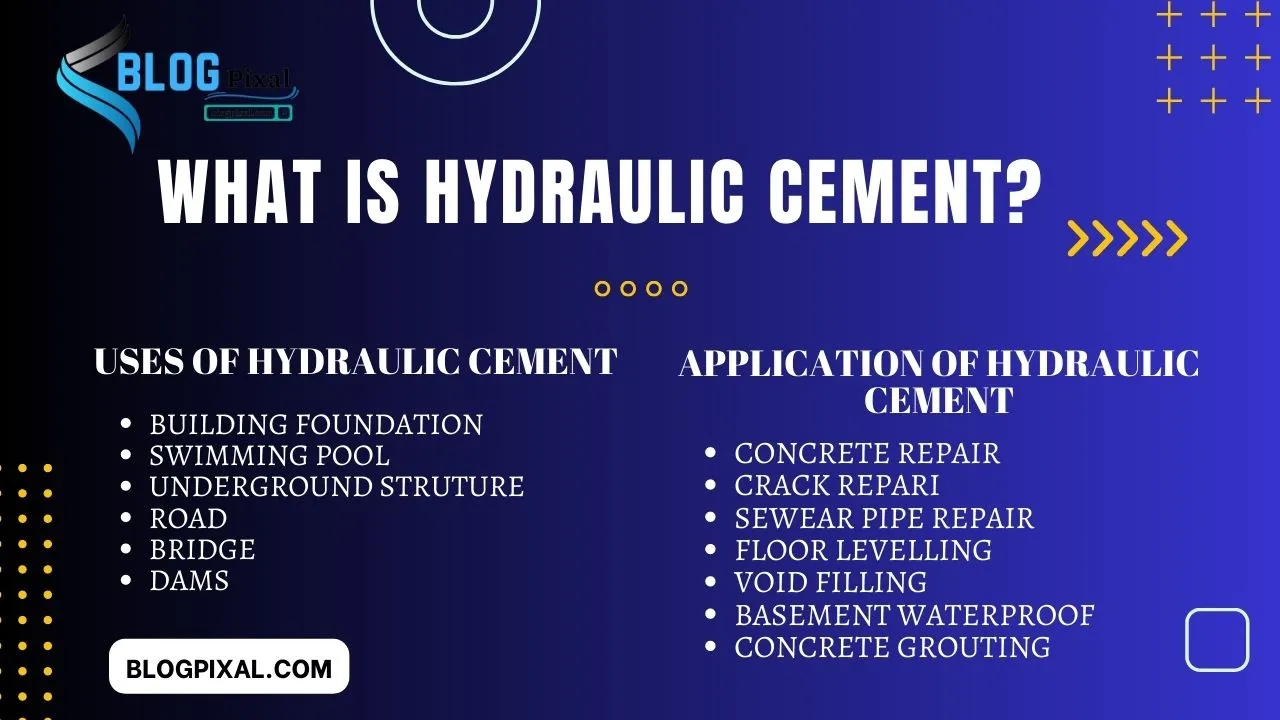Hey ! what’s up? I hope you are very well. Welcome to our next blog. you already know what we discuss today. Do You know, the best quality of air is very important to our building indoor can directly impact to our health and well human being.
Proper ventilation is the main part of the building construction.
Ventilation in a building is a process making path of fresh air inter in indoor and removing polluted air in the outdoor.
Same function of human. For example: Remove carbadoxes and inter Fresh Oxygen.
With out proper ventilation in the building, your design and construction is not a good. So we should make sure to the functionable ventilation is the most importance in the building. Today in this article we discuss ultimate guide of ventilation in a building.
Such as types of ventilation, importance, design consideration and common issues in ventilation. So let’s get started:
Introduction
Ventilation in a buildings refers to the process of exchanging indoor and outdoor air to maintain good air quality.
It involves removing stale air, odors, and pollutants while bringing in fresh air. Proper ventilation is very important to an effective atmosphere in residential, commercial, and industrial facilities, proper ventilation is essential.
Multiple benefits of ventilation include temperature management, excess moisture removal, minimizing the accumulation of dangerous gases, and limiting the spread of airborne pollutants. By ensuring sufficient airflow, ventilation contributes to the overall well-being of occupants. Ventilation is also directly connected to the Room partition for air circulation in the building.
What is ventilation in a building?
Ventilation in a building refers to the process of providing fresh air circulation and removing polluted air from indoor spaces. It is a crucial aspect of maintaining a healthy and comfortable indoor environment.
Proper ventilation ensures that occupants have access to clean and breathable air, while also controlling temperature, moisture levels, and the concentration of contaminants.
Ventilation serves several important purposes. Firstly, it replenishes oxygen levels in enclosed spaces, ensuring that occupants have an adequate supply of fresh air for breathing.
Additionally, ventilation helps remove odors, smoke, dust, and other pollutants that can accumulate indoors. This is especially important in settings where multiple activities occur, such as homes, workplaces, educational institutions, and commercial buildings.
There are different types of ventilation systems used in buildings. Natural ventilation utilizes openings like windows, doors, and vents to allow air exchange driven by wind and temperature differences. On the other hand, mechanical ventilation uses fans and ducts to distribute and circulate air throughout the structure.
The quantity of airflow required, the building’s architecture, and the link with HVAC systems should all be taken into consideration while designing and installing ventilation systems.
Regular maintenance and cleaning of ventilation systems are also essential to ensure optimal performance and prevent issues like inadequate airflow, poor air distribution, and the buildup of pollutants.
Indoor Air Quality(IAQ)
Indoor Air Quality (IAQ) is known as a air quality in the building and structure , To directly connected to the health and well-being of occupants. Poor IAQ has been associated with Sick Building Syndrome, reduced productivity, and impaired learning in educational settings.
Carbon Monoxide, Volatile organic compounds (VOCs) and radon, also micromechanical pollutant like mold and bacteria can effect to indoor air quality (IAQ).
Additionally, any mass or energy stressor that can induce adverse health conditions can affect IAQ. To enhance indoor air quality, it is crucial to implement source control, effective filtration systems, and proper ventilation to dilute and remove contaminants. These methods serve as primary approaches for improving IAQ in most buildings.
Types of ventilation in a Building
In order to maintain quality air circulation and a healthy interior atmosphere, many types of ventilation systems are frequently utilized in buildings. Building ventilation typically comes in two primary forms:
Natural Ventilation in a building
Natural ventilation utilizes natural forces such as wind and thermal buoyancy to facilitate the movement of air. It depends on carefully positioned vents like windows, doors, air vents, or skylights to allow in the fresh air and allow out polluted air.
Natural ventilation is energy-efficient and sustainable, as it utilizes natural airflow without the need for mechanical systems. In the Natural Ventilation is Reduce ventilation in a building cost.
Advantages of Natural Ventilation
Following are the some advantage of natural Ventilation:
- Improved indoor air quality
- Reduction in energy consumption and lower utility costs
- Enhanced occupant comfort and well-being
- Natural cooling effect, reducing the need for mechanical cooling systems
- Removal of indoor pollutants and odors
- Prevention of condensation and moisture-related issues
- Increased connection to the outdoor environment
- Potential for natural daylighting and views
- Sustainable and environmentally friendly solution
- Reduced reliance on mechanical ventilation systems
Mechanical Ventilation in a building
Mechanical ventilation is the process of actively moving air about a building using mechanical equipment like fans, blowers, or exhaust systems. When natural ventilation is impractical or insufficient, this sort of ventilation is frequently adopted.
Mechanical ventilation systems can be designed to supply fresh air, remove stale air, or both. They offer greater control over airflow rates, ensuring consistent air distribution throughout the building.
Supply Ventilation
Supply ventilation systems introduce fresh outdoor air into the building while removing an equal amount of polluted air. This helps maintain a positive pressure indoors, preventing the infiltration of outdoor pollutants.
Exhaust Ventilation
Exhaust ventilation systems primarily focus on removing stale or contaminated air from indoor spaces. They exhaust air from specific areas such as bathrooms, kitchens, or confined spaces where pollutants or moisture tend to accumulate.
Balanced Ventilation
Balanced ventilation systems combine both supply and exhaust mechanisms to ensure a balanced airflow. They provide controlled amounts of fresh air while simultaneously removing an equal amount of stale air, maintaining a neutral pressure balance.
Advantages of Mechanical Ventilation
I am added some mechanical ventilation on building
- Improved indoor air quality
- Efficient removal of pollutants and contaminants
- Reduced risk of mold and mildew growth
- Regulation of humidity levels
- Control of odors and unpleasant smells
- Enhanced occupant comfort and well-being
- Prevention of stagnant air and stuffiness
- Reduction of airborne pathogens and infectious diseases
- Energy efficiency and potential cost savings
- Compliance with building codes and regulations regarding ventilation.
Hybrid Ventilation in a Building
Hybrid ventilation combines the principles of natural and mechanical ventilation to optimize airflow based on specific conditions. It integrates the use of mechanical ventilation when natural ventilation alone cannot meet the desired air exchange rates or when additional control is required.
Each type of ventilation system has its advantages and considerations, and the choice of system depends on factors such as building design, occupancy, climate, and energy efficiency goals. An excellent ventilation system that is well-designed and maintained enables the flow of clean, fresh air while effectively excluding harmful substances and supports a comfortable and healthy interior atmosphere.
Benefits of Ventilation in a Building
Proper ventilation in a buildings Gives Large benefits for occupants and the overall indoor environment. Here are Some key advantages of ensuring adequate ventilation:
- Provides fresh and clean air for breathing.
- Removes and dilutes indoor air harmful substances, such as odors, hay fever, and volatile organic compounds (VOCs).Reduces the risk of respiratory issues, allergies, and asthma symptoms.
- Prevents the buildup of excessive humidity, reducing the growth of mold and mildew.
- Controls and removes excess moisture, preventing damage to building materials and belongings.
- Regulates indoor temperature, enhancing comfort for occupants.
- Improves interior air quality, promoting a healthy and more productive environment in the buildings.
- Reduces the spread of infectious diseases by minimizing the concentration of airborne pathogens.
- Enhances cognitive function and concentration, leading to better productivity and performance.
- Minimize the risk of sick building syndrome (SBS) symptoms, such as headaches, fatigue, and eye irritation.
- Increases the overall well-being and satisfaction of occupants.
- Supports better sleep quality, contributing to overall health and well-being.
- decreases the buildup of carbon dioxide (CO2) and other gases, creating an atmosphere that is clean and high in oxygen.
- Helps eliminate or reduce unpleasant odors, improving overall indoor comfort.
- Controls the level of indoor pollutants generated by activities such as cooking, cleaning, and chemical use.
- Enhances the effectiveness and efficiency of HVAC systems by providing proper air distribution.
- Reduces condensation on windows and surfaces, preventing moisture-related damage.
- By improving air circulation and lowering the need for excessive heating or cooling, it improves energy efficiency.
- Supports a more sustainable building by utilizing natural ventilation and reducing energy consumption.
- Creates a welcoming and pleasant environment for occupants, improving their overall experience.
These advantages underscore the significance of adequate ventilation in buildings, emphasizing its crucial role in preserving a healthy, cozy, and optimally functioning indoor environment.
Design Consideration of Ventilation in a Building
These are some design considerations before application of ventilation in a building. Without any design concept, you will not get a proper ventilation system in your home. So the Followings points should be kept in mind to ensure effectiveness and better efficiency.
Determining the necessary airflow rates based on factors such as building occupancy, size, and purpose is essential.
Sufficient ventilation should provide an adequate number of air changes per hour to maintain good indoor air quality.
Building Layout and Orientation
The layout and orientation of the building can significantly impact natural ventilation opportunities. To maximize the possibility of natural airflow, architectural considerations including where to position windows, doors, and open areas should be made.
Integration with HVAC Systems
The system provides complete natural climate control, and ventilation is directly linked with the heating, Ventilation, and air conditions system. Coordination between ventilation and HVAC systems ensures optimal comfort, energy efficiency, and air quality within the building.
Air Distribution
Proper air distribution is very important to ensure that fresh air reaches all occupied spaces within the building. Designing an efficient airflow distribution system, which may include the strategic placement of air inlets and outlets, helps maintain uniform air circulation and prevents areas of poor ventilation.
Control and Regulation
Incorporating appropriate control and regulation mechanisms in the ventilation system allows for adjustments based on occupancy, outdoor conditions, and specific requirements. This ensures that ventilation operates efficiently and meets the changing needs of the building and its occupants.
Noise and Vibration Control
Noise and vibration from ventilation systems can be disruptive and affect occupant comfort. During the design phase, consideration should be given to noise reduction measures, such as selecting quieter equipment, utilizing sound insulation materials, and properly isolating mechanical components. [Ventilation in a Building]
Energy Efficiency
Designing for energy efficiency is crucial in ventilation systems. Incorporating energy-saving features such as variable speed drives, demand-controlled ventilation, and heat recovery mechanisms can significantly reduce energy consumption and associated costs.
Maintenance and Accessibility
For the ventilation system to be efficient over the long term, it must be made so that it is simple to access and maintain. Designing accessible components, such as filters and ductwork, facilitates regular cleaning and maintenance, which is vital for optimal performance and air quality.
Considering these design considerations when planning and applying a ventilation system in a building helps create an efficient, well-designed, and functional system. So these provide adequate airflow, maintain good indoor air quality, and contribute to a healthy and comfortable indoor environment.
Common Ventilation Issues in building
Followings are the some ventilation issue in a building. So we need to minimize as possible in the building for proper ventilation.
- Poor airflow
- Insufficient fresh air supply
- Stale or stuffy indoor air
- Inconsistent temperature distribution
- Excessive humidity levels
- Inadequate ventilation in bathrooms and kitchens
- Lack of proper air filtration
- Inefficient exhaust systems
- Clogged air vents or ducts
- Inadequate ventilation in confined spaces
- Improperly sized ventilation systems
- Inadequate insulation around ventilation openings
- Noise issues from ventilation equipment
- Inconsistent air pressure balance
- Inefficient use of energy due to ventilation system inefficiencies
- Mold and mildew growth due to moisture buildup
- Allergens and pollutants not effectively removed from the air
- Inadequate control over ventilation rates
- Inadequate ventilation in occupied areas
- Lack of maintenance and regular inspections of ventilation systems [Ventilation in a Building]
How to Fix Ventilation issues in Building?
We should be fix above ventilation issue regularly to safe air condition in the building. So i included following Solutions of Ventilation issues in Building:
- Install energy-efficient mechanical ventilation systems to ensure proper air circulation.
- Incorporate smart ventilation controls that adjust airflow based on occupancy and outdoor conditions.
- Implement demand-controlled ventilation systems to optimize energy usage while maintaining air quality.
- Use natural ventilation strategies, such as operable windows and skylights, to facilitate airflow and reduce reliance on mechanical systems.
- provide heat recovery ventilation (HRV) or energy recovery ventilation (ERV) systems to reduce energy loss during ventilation.
- Conduct regular maintenance and cleaning of ventilation systems to prevent the buildup of contaminants and ensure optimal performance.
- Integrate air purification technologies, such as advanced filters or UV-C germicidal irradiation, to enhance indoor air quality.
- Utilize adjustable louvers or dampers to regulate the amount of fresh air intake and exhaust as per requirements.
- Install occupancy sensors to activate ventilation systems when spaces are in use, minimizing energy waste in unoccupied areas.
- Implement cross-ventilation strategies by designing building layouts that facilitate natural airflow between spaces.
- Integrate green roofs or vertical gardens to enhance air quality and provide natural cooling through evapotranspiration.
- Use low-emission materials in the building and furnishings to reduce the release of pollutants into the air.
- Apply proper insulation techniques to prevent unwanted air leakage and ensure efficient ventilation.
- Incorporate automated controls that monitor and adjust ventilation rates based on real-time air quality measurements.
- Install CO2 sensors to detect high carbon dioxide levels, triggering increased ventilation rates to maintain healthy indoor environments.
- Use thermal mass materials in building design to stabilize temperature fluctuations and reduce the need for excessive ventilation.
- Integrate natural ventilation strategies with building management systems to ensure seamless control and monitoring.
- Implement effective soundproofing measures to mitigate noise pollution while maintaining proper ventilation.
- Educate building occupants about the importance of ventilation and encourage them to utilize windows and natural airflow when suitable.
- Stay updated on emerging ventilation technologies and industry standards to adopt innovative solutions for better building ventilation.
Conclusion
Proper ventilation is essential for a building to maintain a healthy and comfortable internal environment. Ventilation systems contribute to the general well-being of people by delivering adequate airflow and eliminating contaminants. Ventilation, whether natural or artificial, is critical in supplying fresh and breathable air throughout structures.
FAQs
How often should ventilation systems be cleaned?
Regular cleaning and maintenance of ventilation systems are recommended at least once a year or as per the manufacturer’s guidelines. However, factors such as building occupancy and environmental conditions may influence the cleaning frequency.
Can natural ventilation be sufficient for all buildings?
While natural ventilation can be effective in many scenarios, not all buildings are suitable for relying solely on natural airflow. Factors such as building design, location, and local climate need to be considered when determining the feasibility of natural ventilation.
What are the signs of poor ventilation?
Signs of poor ventilation include stuffy or stagnant air, lingering odors, condensation on windows, mold growth, and discomfort among occupants. High humidity levels and inadequate airflow are indicators that ventilation may not be adequate.
Can ventilation systems reduce energy costs?
Well-designed and properly maintained ventilation systems can contribute to energy efficiency in buildings. By optimizing airflow, these systems can help regulate temperature, reduce reliance on heating or cooling systems, and ultimately lower energy costs.
Are there any government regulations for ventilation in buildings?
Government regulations regarding ventilation in buildings may vary by jurisdiction. It’s essential to consult local building codes and regulations to ensure compliance with ventilation standards and requirements.










